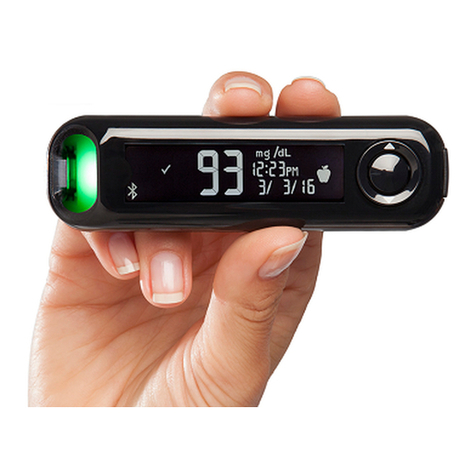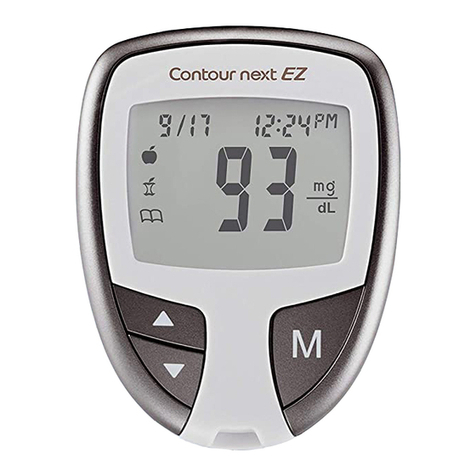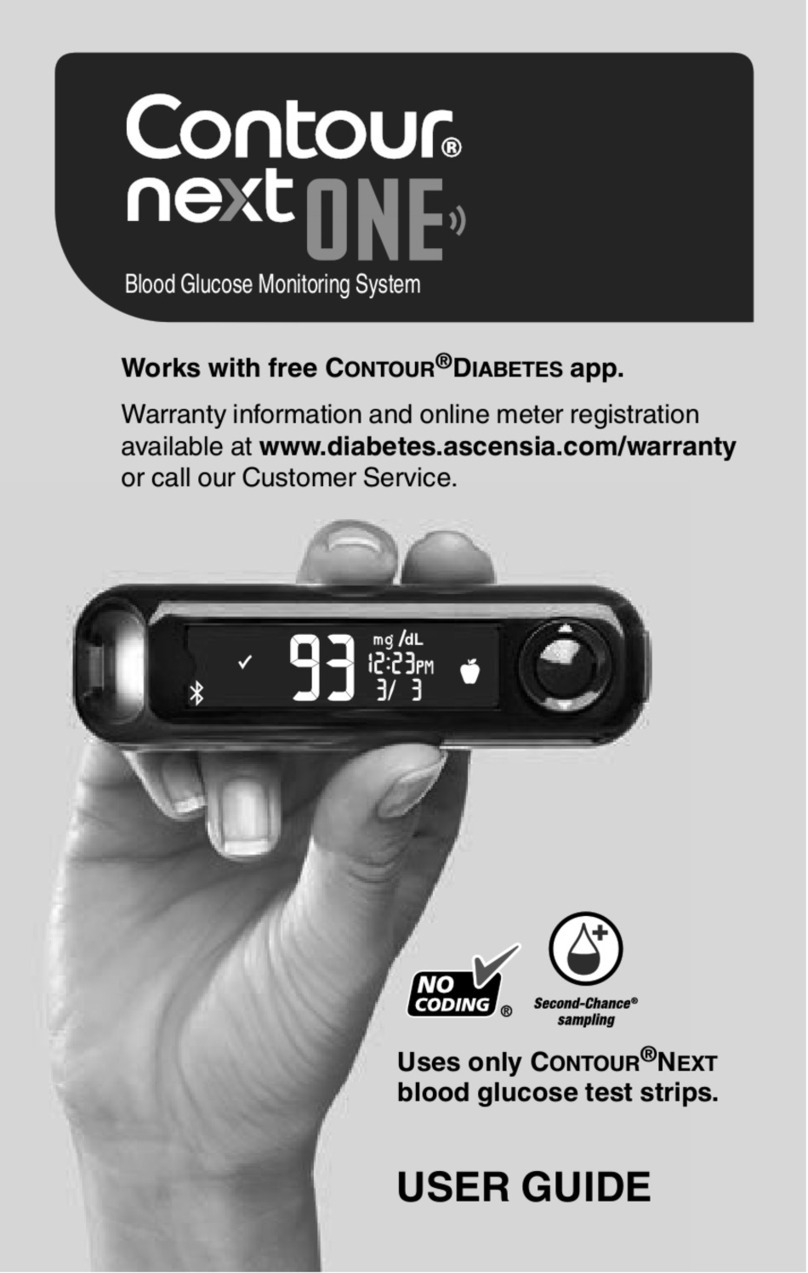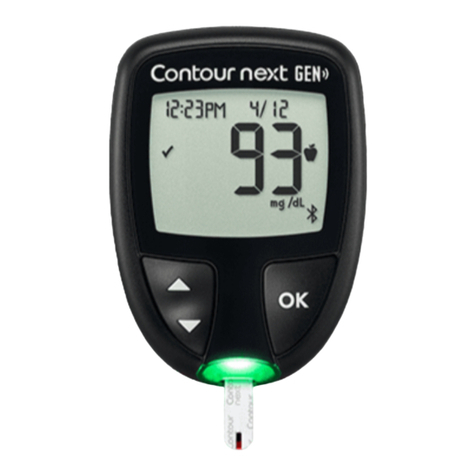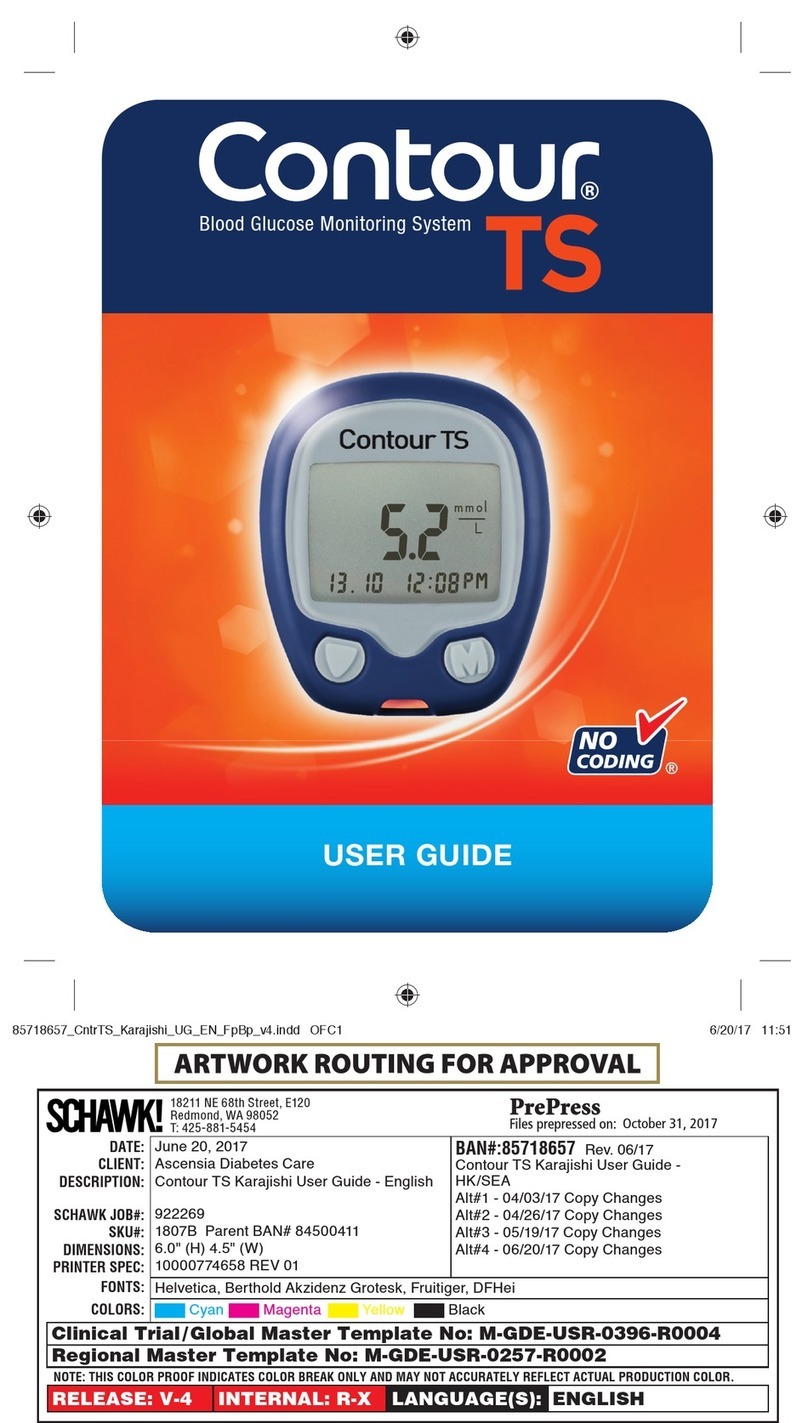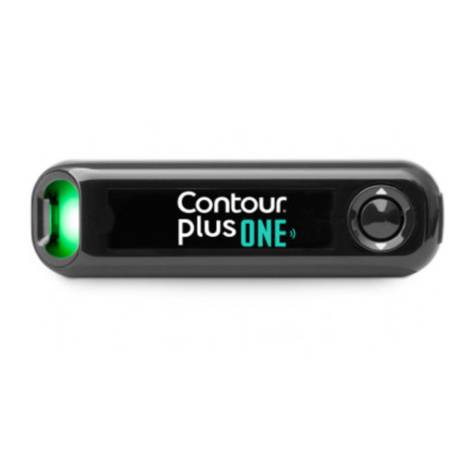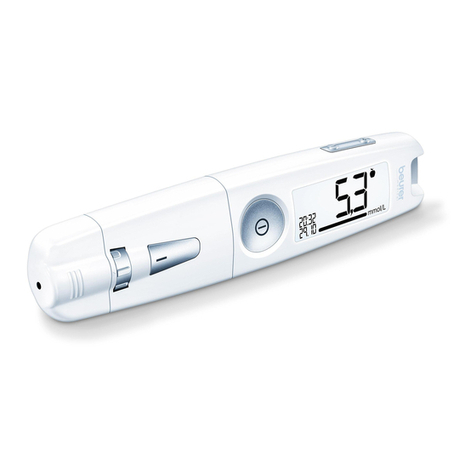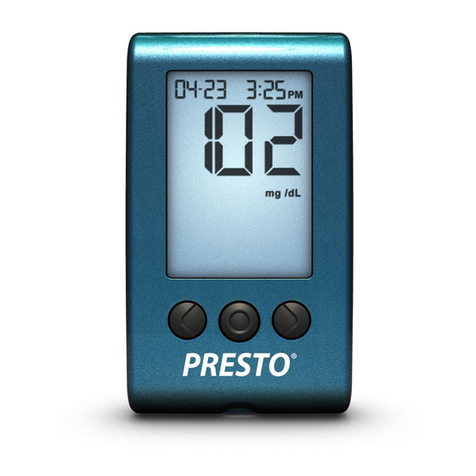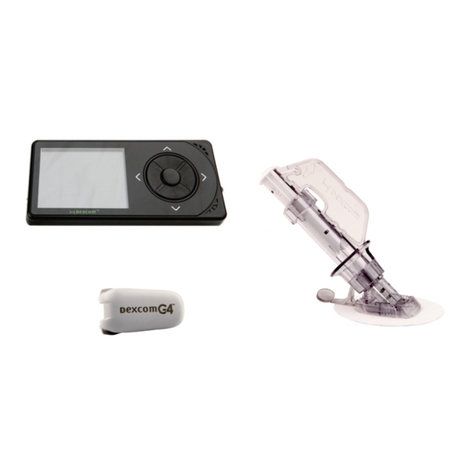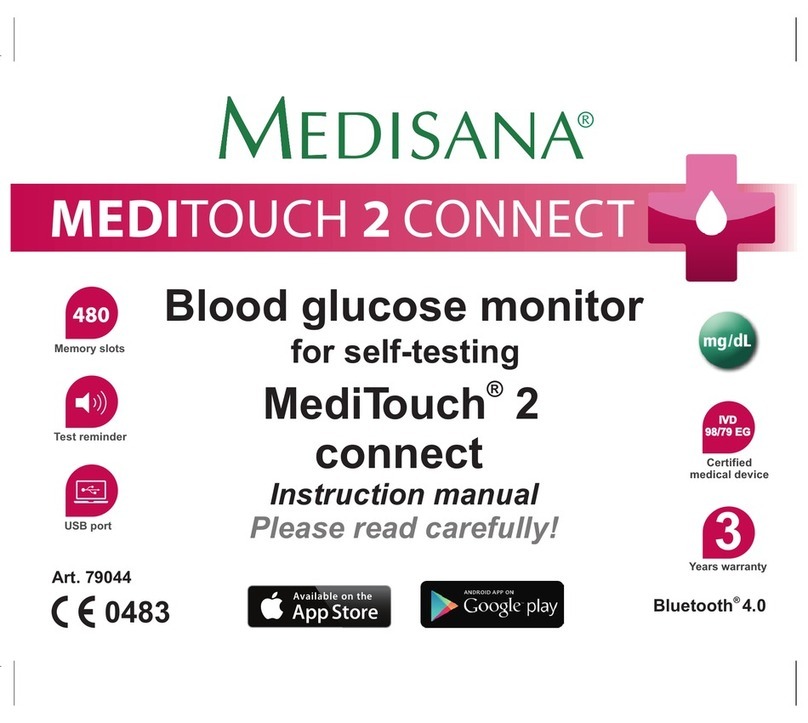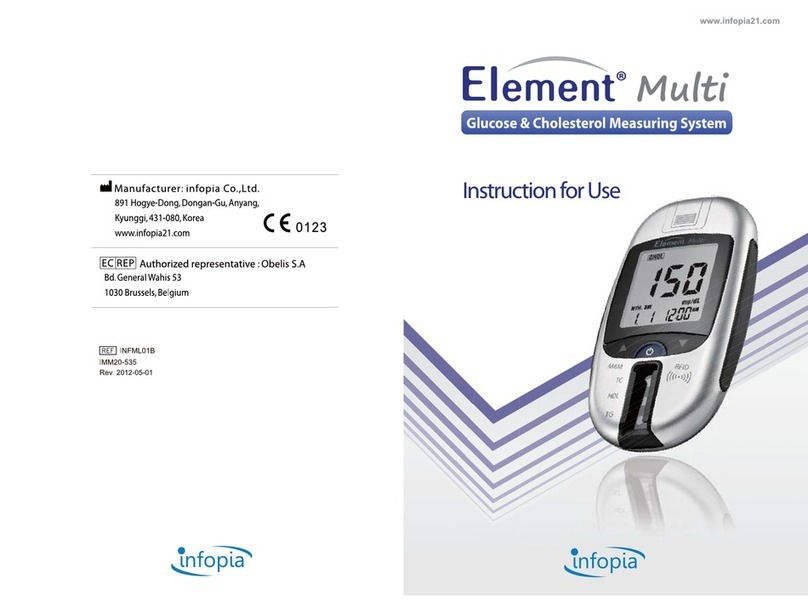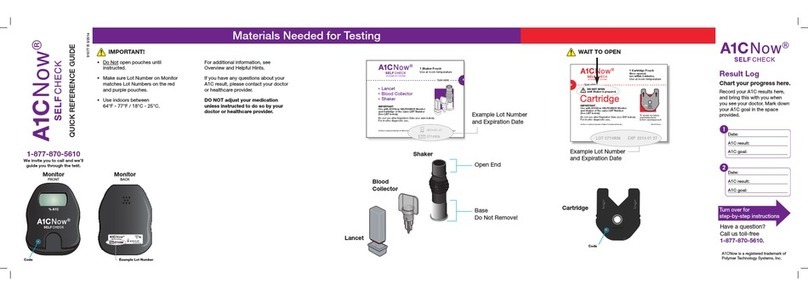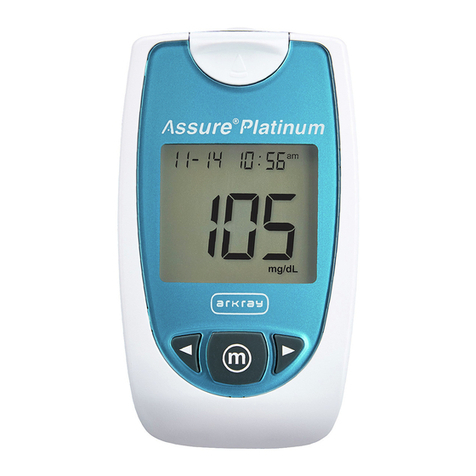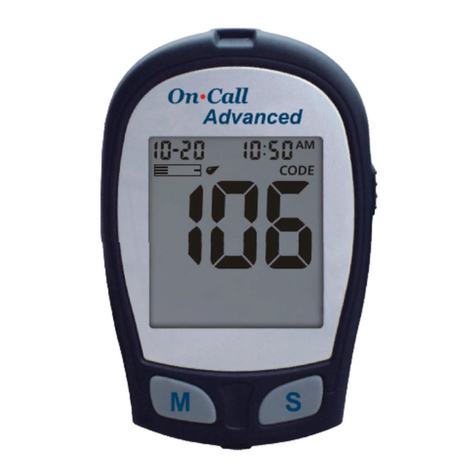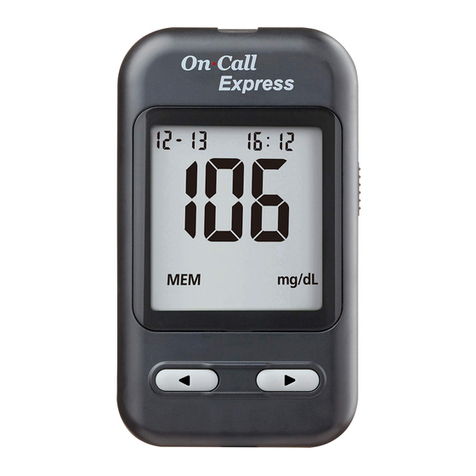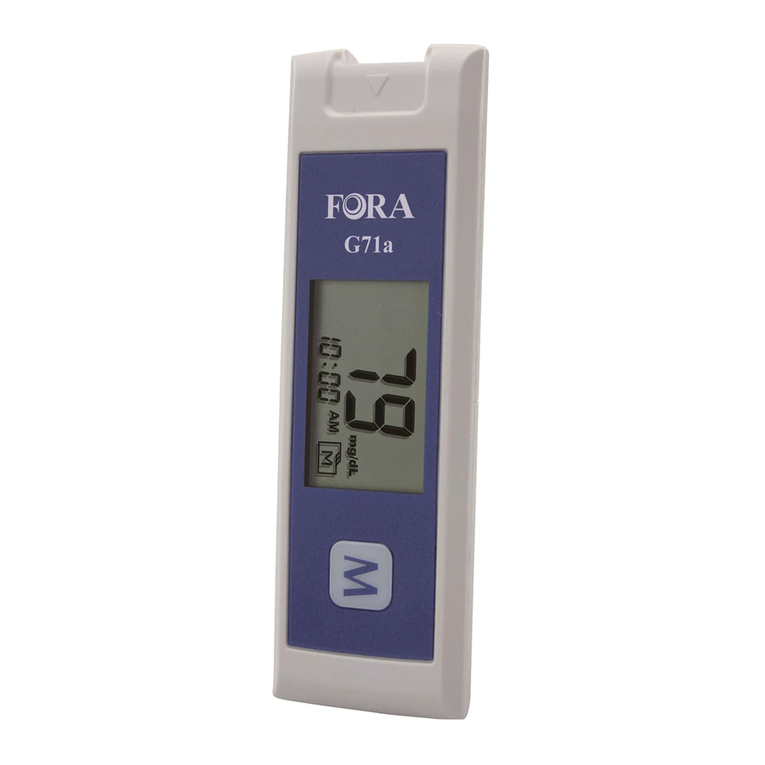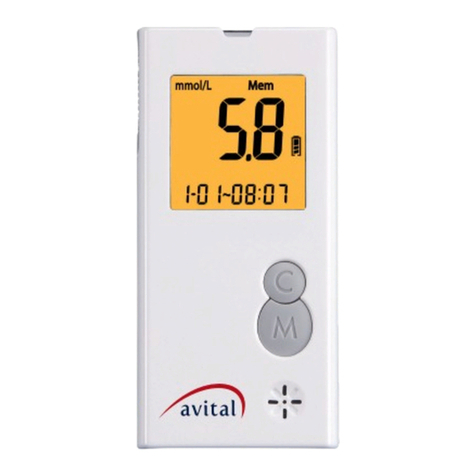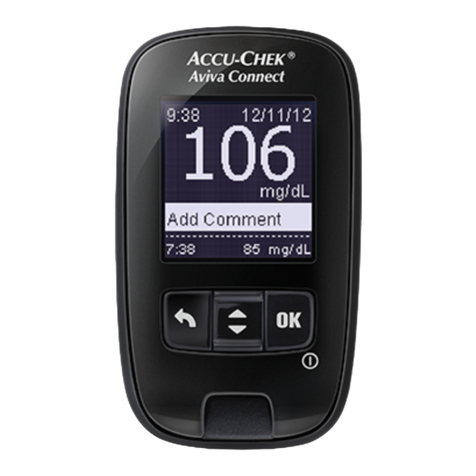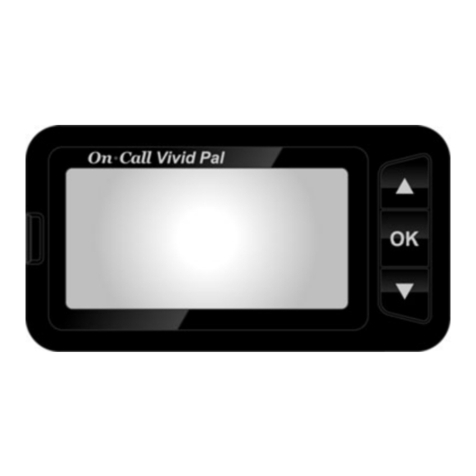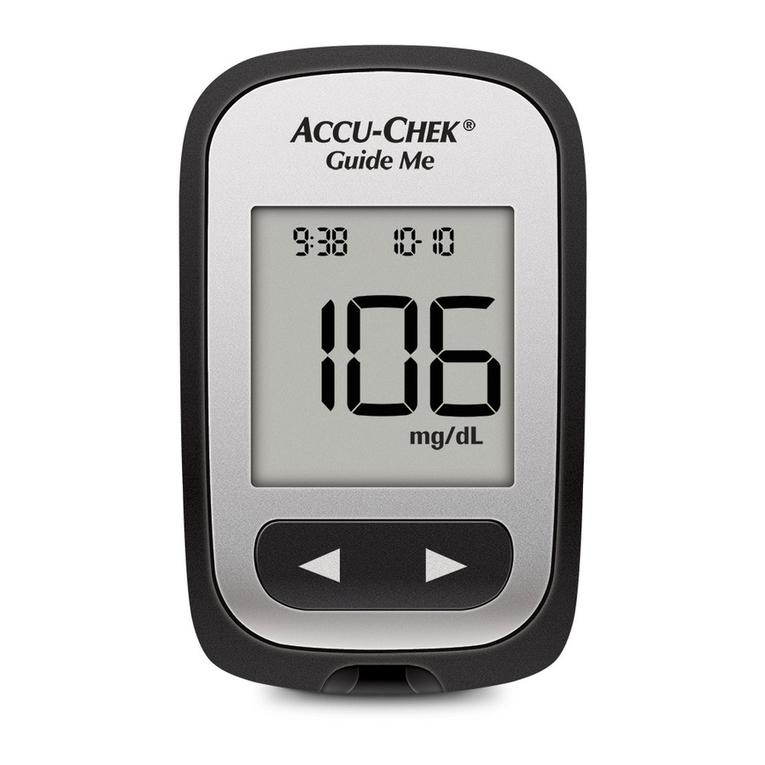
iii
IMPORTANT SAFETY INFORMATION
WARNINGS
Serious Illness
• Capillary (fingerstick or Alternative Site) blood glucose testing may
not be clinically appropriate when peripheral flow is decreased.
Shock, severe hypotension, hyperosmolar hyperglycemia, diabetic
ketoacidosis, and occurrence of severe dehydration are examples
INTENDED USE
The
®
blood glucose monitoring system (meter,
test strips and control solution) is intended for use by persons
with diabetes for self-testing and by health care professionals for
use on a single patient. The
system is intended
for the quantitative measurement of glucose (from 0.6 mmol/L to
33.3mmol/L) in fresh capillary whole blood samples drawn from the
fingertip or palm. Venous whole blood samples may also be used by
health care professionals.
The
blood glucose monitoring system may also
be used by health care professionals to monitor hypoglycemia in
neonates. The system should not be used for diagnosis or screening.
Diagnosis of neonatal hypoglycemia should be performed using a
laboratory glucose method. For neonates exhibiting hypoglycemic
symptoms, provide appropriate medical care to treat symptoms and
monitor patients. If symptoms are inconsistent with meter results,
obtain a laboratory blood glucose test. The
blood
glucose monitoring system has not been evaluated specifically with
pre-term neonates.
The
blood glucose monitoring system may be used
as an aid to monitor the effectiveness of an individual’s personal
blood glucose control program. The
blood glucose
monitoring system is not intended for the diagnosis of or screening
for diabetes mellitus.
The
blood glucose monitoring system is intended
for in vitro diagnostic use only.
of clinical conditions that may adversely affect the measurement
of glucose in peripheral blood.1-3
Talk to Your Health Care Professional
• Before setting any Target ranges on your meter,
• Before changing your medication based on test results,
• If your blood sugar reading is under 2.8 mmol/L follow medical
advice immediately,
• If your blood sugar reading is over 13.9 mmol/L, wash and dry
your hands well and repeat the test with a new strip. If you
get a similar result, call your health care professional as soon
as possible,
• About whether Alternative Site Testing (AST) is appropriate for you.
Potential Biohazard
• Always wash your hands well with soap and water and dry them
well before and after testing, handling the meter, lancing device or
test strips.
• The meter, lancing device and lancets provided with your kit are for
single-patient use. Do not share them with anyone including other
family members. Do not use on multiple patients.
• All parts of this kit are considered biohazardous and can
potentially transmit infectious diseases, even after you have
performed cleaning and disinfection. For instructions, please
see Cleaning and Disinfection, page 22.
• The lancing device provided with your kit should not be used for
assisted blood draws by health care professionals or at health
care provision sites.
• Use a new lancet each time you test because it is no longer sterile
after use.
• Always dispose of test strips and lancets as medical waste or as
advised by your health care professional. All products that come
in contact with human blood should be handled as if capable of
transmitting infectious diseases.
• Keep out of reach of children. This kit contains small parts which
could cause suffocation if accidentally swallowed.
• Keep batteries away from children. Lithium batteries are
poisonous. If swallowed, immediately contact your poison
controlcenter.
The
blood glucose monitoring system is
intended for single-patient use only and should not be shared.
85476920_CntrNXT_UG_EN.indd 1-2 9/16/16 3:26 PM
